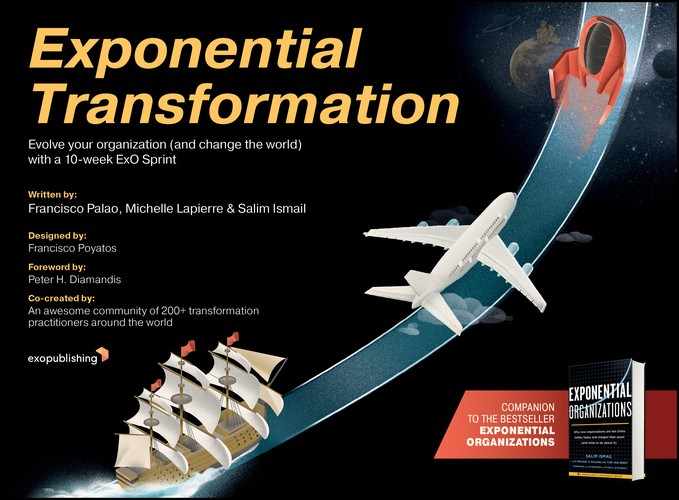Shift to Abundance
Abundance is not something we acquire. It is something we tune into.
– Wayne Dyer
Traditional business models are based on scarcity, where value comes from selling a product or service that is limited in supply. Exponential technologies, however, generate an abundance of everything.
Peter Diamandis, the cofounder and executive chairman of Singularity University, refers to what he calls the 6Ds to describe a chain reaction of technological progress that leads to both upheaval and opportunity.
Once something is digitized, more people have access to it. Everyone has access to powerful technologies, giving individuals and entities the opportunity to create the next big breakthrough.
Entire industries are being impacted as problem spaces shift to new models based on an economy of abundance. When products or services become available through digital means and shed their physical restrictions, they can be produced and distributed at scale to become abundant at zero marginal cost.
Kodak's bankruptcy is an oft-cited example of disruption resulting from digitization as photos moved from the physical format to digital. But consider the specific implication this shift had on the actual business model. The industry moved from a scarcity-based model—just 12, 24, or 36 exposures per roll of film with associated costs for both the film and development—to an abundance-based model in which everyone has access to an unlimited number of pictures at virtually no cost. The problem space changed from an issue of how many pictures to take, to how to share photos, with cost no longer a part of the equation. This shift from scarcity to abundance enabled Instagram, which was acquired by Facebook for $1 billion just as Kodak was shuttering its doors, to achieve success with just 13 employees.
In addition to photography, consider just how thoroughly the old business models for music, movies, accommodation, and transportation have been disrupted. Look at the shifts underway in healthcare, insurance, manufacturing, banking, and energy. In the end, no industry is likely to escape disruption. What's also important to realize is that most of the disruption will come from outside the industries themselves, meaning that those unprepared for the inevitability and pace of change will be taken by surprise.
The biggest challenge faced by all industries is finding new types of business models that work in this new environment. Businesses must adapt when—and in anticipation of when—assets, users, or opportunities shift from a scarcity-based model (limited by how many you have) to an abundance-based model (how to manage a limitless supply).
Most ExOs are already building business models based on abundance. For example, Waze taps into an abundance of GPS on our phones, Airbnb taps into an abundance of available rooms and 99designs taps into an abundance of designers.
While new businesses debut business models designed to eat everyone else's lunch, traditional business models continue to focus on selling a scarce product or service. In fact, most management thinking and organizational dynamics are still set up for a linear, predictable age.
It takes experimentation to find a brand-new business model that leverages abundance and employs service-based thinking. Accessing abundance creates a need for new tools and new practices to manage that abundance. And these new tools and practices are exactly what Exponential Organizations have mastered.

Digitized
Anything that becomes digitized—representable by ones and zeros—can be accessed, shared, and distributed by computer. It takes on the same exponential growth seen in computing.

Deceptive
Exponential trends aren't easily spotted in the early days. Growth is deceptively slow until it begins to be measured in whole numbers.

Disruptive
Digital technologies outperform previous non-digital models in both effectiveness and cost, disrupting existing markets for a product or service.

Demonetized
As technology becomes cheaper, sometimes to the point of being free, money is increasingly removed from the equation.

Dematerialized
The need for bulky or expensive single-use physical products—radio, camera, GPS, video, phones, maps—disappears as these items are incorporated into smartphones.

Democratized
Once something is digitized, more people can have access to it. Everyone has access to powerful technologies, giving individuals and entities the opportunity to create the next big breakthrough.
